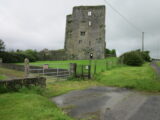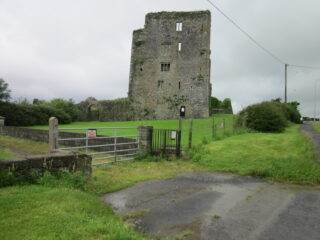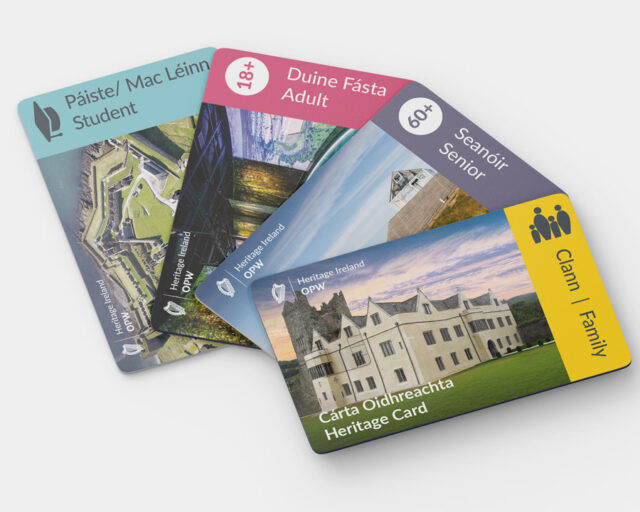Notice
Grannagh Castle is a state-owned National Monument in the care of the Office of Public Works
WARNING: It should be noted that these sites are unguided and a level of care and caution should be maintained during all stages of your visit. The Office Of Public Works (OPW) will not be held responsible for any damages, injuries, or losses that occur
Grannagh (Granny) Castle
The place name Grannagh is an anglicisation of the Irish word for a gravelly place. Grannagh Castle was built by Norman settlers on the site of a Gaelic-Irish fortress called Dún Bhrain, which was built in the 1st Century AD and was later used to repel the incursions of the Viking raiders from Waterford city. The site also had the strategic and economic benefit of allowing those who held it to control traffic and merchant trade along the River Suir. It is believed the first Norman castle on the site was built in the late 13th century by the Le Poer family and came into the possession of the Butlers in 1375.
Grannagh is a typical Hiberno-Norman castle/tower house with a large square bawn wall or courtyard. In each corner stood a projecting circular, or drum tower, which had loopholes giving clear views of the connecting walls. The large rectangular four storey tower house in the north-eastern corner was built in the 15th century when under the Countess of Granny (1471-1542). Grannagh Castle became the symbol of Butler power in the south-east of Ireland. The Countess and her husband, Piers Rue Butler, used the castle as the main residence of the Butlers of Ormonde. During this era ships going up and down the river to Carrick-on-Suir, Cahir and Clonmel came close to the battlements because that was the deepest channel through which to navigate, and they paid the tax to the Butler’s on these river journeys. While it doesn't feature greatly in The Ormonde Deeds, Grannagh Castle had a certain prestige at that time that others failed to match.
According to local folklore, the castle exerted an air of authority, and that was exactly what it was meant to convey to those who dared question the authority of the Countess and her husband. It is said that one day the Countess summoned her jester and compelled him to improve her spirits. He failed to make her laugh and, as a last resort, the court clown suggested a rope trick. He quickly fashioned a rope with several nooses. She responded by demanding to see the invention work. The Countess ordered her soldiers to round up several peasants and warned the jester that if the invention was not successful, he would hang. According to this legend seven innocent peasants were hung from the battlements, an atrocity which restored the Countess’s good spirits. It is said that so delighted was she with “the Butler Knot” that she incorporated it into the family coat of arms.
The Castle remained in the hands of the Ormonde family until at least 1641. Oliver Cromwell's New Model Army captured the castle in 1650 after battering it with cannon fire. This attack marked the beginning of the demise of this once impenetrable fortress. In the subsequent centuries masonry from the castle’s ramparts were quarried to build local homes.
Visit Historic Environment Viewer for more information on Grannagh Castle
Protect our Past - Click here to read about the importance of protecting our country’s unique heritage sites
This national monument is protected in accordance with the National Monuments Acts 1930 to 2014
Gallery
Nearby sites to visit
Greyfriars/French Church
Ruins of a Franciscan Friary in the heart of the Viking Triangle
Approx. 4.5 km from Grannagh (Granny) Castle
Reginald’s Tower
Step inside Ireland’s oldest civic building
Approx. 4.6 km from Grannagh (Granny) Castle
Ballyhack Castle
Savour a sense of the Middle Ages
Approx. 13.9 km from Grannagh (Granny) Castle
The John F. Kennedy Arboretum
A garden of presidential proportions.
Approx. 16.1 km from Grannagh (Granny) Castle
Ormond Castle
Discover a Tudor gem
Approx. 18.0 km from Grannagh (Granny) Castle
Tintern Cistercian Abbey
Where monks toiled and legacies were created
Approx. 22.7 km from Grannagh (Granny) Castle


